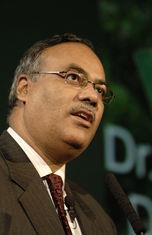
The World Trade Organisation (WTO) has encouraged agriculture to grow through the recession and harness bio-energy options as it takes economic stimulus measures.
Speaking to the National Farmers’ Union (NFU) conference, WTO deputy director general Harsha Singh defended the perception of his organisation’s stance as harsh on agriculture and said strong supplies would encourage a competitive market.
Singh said: “A number of misconceptions abound regarding the WTO, including the view that the WTO does not allow subsidies, or prevents consumer health and safety policies, and that under the WTO, agriculture products are treated as any other product such as toys, clothing, cars or steel. All these views are not correct.
“There is no uniform view about agriculture in the WTO. Some consider agriculture products similar to any other product, while others consider them to be special, linked to lifestyles, environment, and a continued need for maintaining agricultural activities.
“[The WTO] does not do away with support or subsidies to farmers and does not in any way restrict green subsidies.”
Singh forecasted an increase in demand for processed agricultural products from the growing markets in large developing countries and called for the UK to re-enforce current trade links in these areas.
He also suggested agriculture has a key part to play on the global energy market. He said: “Another growing market is the use of agricultural products for bio-energy. A multi-pronged approach is needed, including research and development for the new generation of bio-energy products, seeking greater market access and a more level playing field.
“We need to also take account a view that agriculture prices may come down because of a strong supply response in agriculture from the large unused, but potentially arable, land in certain parts of the world.
“This additional arable land is estimated to be about twice as much as is currently farmed. However, in effect only a fraction of the extra land would be available for agriculture because land is required for developing infrastructure and to preserve forest cover.”



